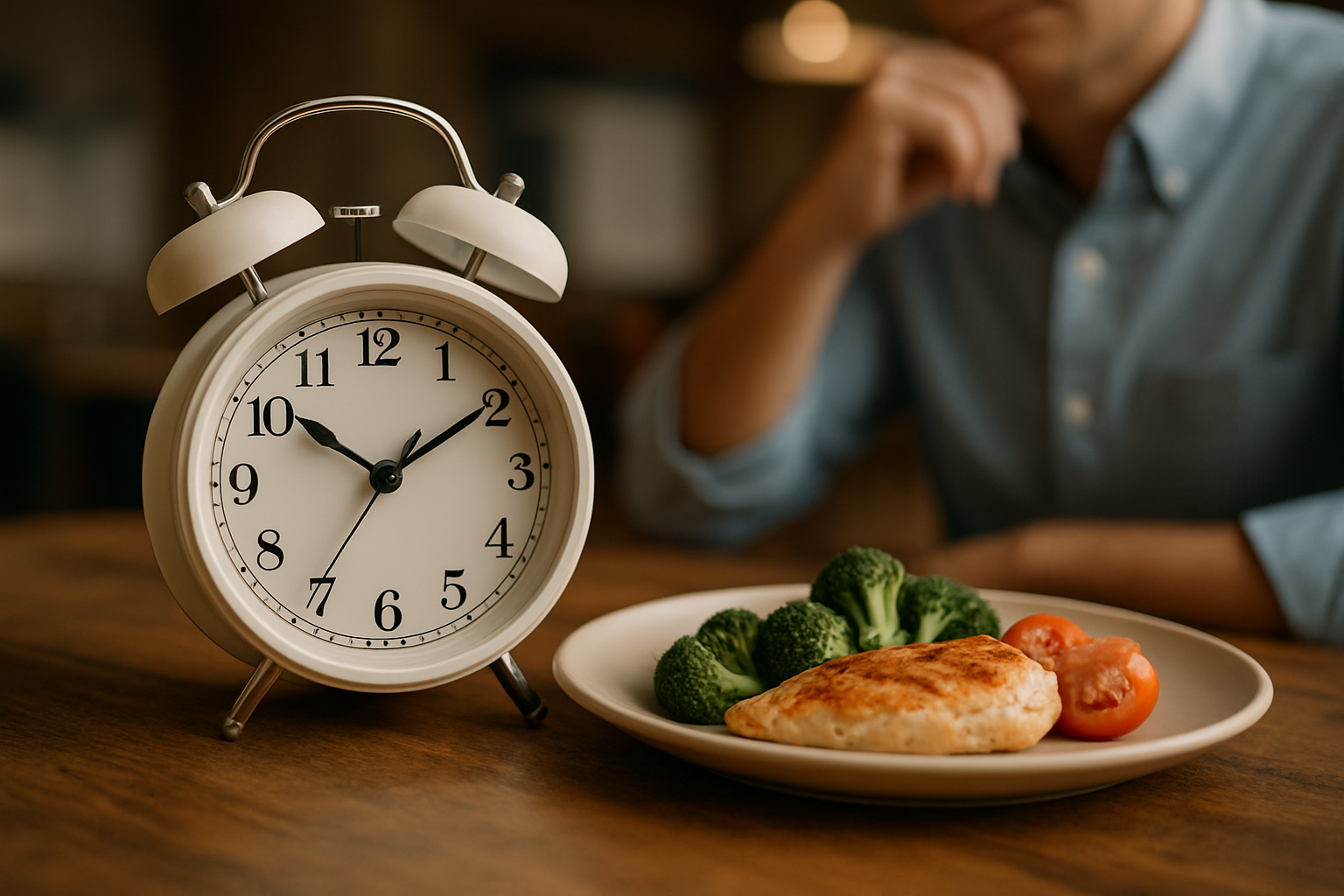Chronodiet: Aligning Your Meals with Your Body Clock
Imagine a world where the timing of your meals is just as crucial as their content. Welcome to the fascinating realm of chronodiet, where the ancient wisdom of circadian rhythms meets modern nutritional science. Could syncing your eating schedule with your body's internal clock be the key to unlocking optimal health and vitality?

The Science Behind Chronodiet
Chronodiet is rooted in the field of chrononutrition, which explores the relationship between our body’s internal clock and our eating habits. Our circadian rhythm, often referred to as our body clock, regulates various physiological processes, including hormone production, metabolism, and digestion. This internal timekeeper is influenced by external cues, with light being the most powerful synchronizer.
Research has shown that our bodies are primed for different functions at different times of the day. For instance, insulin sensitivity is highest in the morning, making it an ideal time for consuming carbohydrates. Conversely, our ability to process fats is more efficient in the evening. By aligning our meal timing with these natural rhythms, we can optimize nutrient absorption and metabolic efficiency.
Key Principles of Chronodiet
Chronodiet operates on several fundamental principles that aim to harmonize our eating patterns with our circadian rhythm:
Time-restricted feeding: This involves limiting food intake to a specific window, typically 8-12 hours per day. This approach allows for a period of fasting, which can enhance cellular repair and metabolic flexibility.
Meal timing optimization: Chronodiet emphasizes consuming larger meals earlier in the day when our metabolism is most active. This aligns with the saying, Eat breakfast like a king, lunch like a prince, and dinner like a pauper.
Nutrient timing: Different macronutrients are prioritized at different times of the day. For example, protein-rich meals are recommended in the morning to support muscle synthesis and satiety throughout the day.
Light exposure management: Since light is a powerful circadian synchronizer, chronodiet advocates for exposure to natural light in the morning and limiting artificial light in the evening to maintain a healthy circadian rhythm.
Benefits of Adopting a Chronodiet
Proponents of chronodiet report a wide range of potential benefits:
Improved metabolic health: By eating in sync with our circadian rhythm, we can enhance insulin sensitivity and glucose metabolism, potentially reducing the risk of type 2 diabetes and metabolic syndrome.
Weight management: Chronodiet may help regulate appetite hormones and reduce late-night snacking, contributing to more effective weight control.
Enhanced sleep quality: Aligning meal times with our circadian rhythm can promote better sleep patterns, leading to improved overall health and cognitive function.
Increased energy levels: By optimizing nutrient absorption and metabolic efficiency, chronodiet may lead to more stable energy levels throughout the day.
Potential for longevity: Some studies suggest that time-restricted feeding, a key component of chronodiet, may activate cellular pathways associated with increased lifespan.
Implementing Chronodiet in Daily Life
Adopting a chronodiet doesn’t have to be a drastic lifestyle overhaul. Here are some practical steps to incorporate chronodiet principles into your routine:
Start with breakfast: Make your first meal of the day substantial and nutrient-dense. Include a good balance of protein, complex carbohydrates, and healthy fats.
Set a consistent eating schedule: Try to eat your meals at the same time each day to help regulate your body’s internal clock.
Limit late-night eating: Aim to finish your last meal at least 2-3 hours before bedtime to allow for proper digestion and promote better sleep.
Gradually adjust your eating window: If you’re interested in time-restricted feeding, start by reducing your eating window by an hour and gradually work towards your desired schedule.
Be mindful of light exposure: Expose yourself to natural light in the morning and limit blue light exposure from electronic devices in the evening.
Challenges and Considerations
While chronodiet shows promise, it’s important to acknowledge potential challenges:
Social factors: Aligning meal times with social and work schedules can be challenging for some individuals.
Individual variations: Chronotypes (individual circadian preferences) can vary, so a one-size-fits-all approach may not work for everyone.
Long-term adherence: Maintaining a strict eating schedule long-term may be difficult for some people.
Potential for disordered eating: As with any dietary approach, there’s a risk of developing an unhealthy relationship with food if taken to extremes.
Chronodiet Insights
-
Our bodies have over 20,000 genes regulated by circadian rhythms
-
The liver, a key player in metabolism, has its own circadian clock
-
Shift workers who eat at night have a higher risk of metabolic disorders
-
Blue light from electronic devices can disrupt melatonin production, affecting both sleep and metabolism
-
Chronodiet principles can be adapted for different lifestyles, including vegetarian and vegan diets
As we continue to unravel the intricate relationship between our internal clocks and nutrition, chronodiet emerges as a promising approach to optimize our health through strategic meal timing. By aligning our eating patterns with our body’s natural rhythms, we may unlock a new level of wellness and vitality. However, as with any dietary approach, it’s essential to consult with healthcare professionals and listen to your body’s needs. The future of nutrition may not just be about what we eat, but when we eat it.





